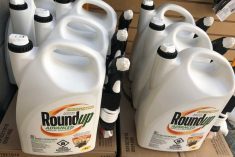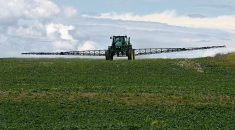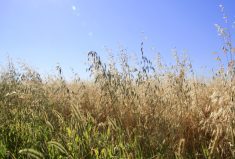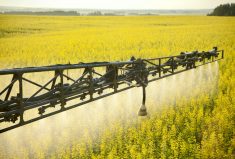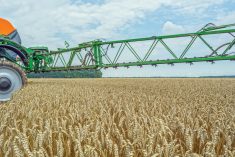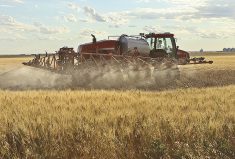The glyphosate you use on the farm hasn’t changed — but public attitudes, at least in some quarters, have radically shifted.
That’s part of the warning in this year’s edition of The Keep it Clean! Program. The site has information on maximum residue levels and regulatory updates but also reflects developments at the national and international levels.

“The Keep It Clean! campaign is targeted to increase awareness of these international issues,” said Cam Dahl, president of Cereals Canada.
“Missing maximum residue limits might pose a trade risk and that happens if one of our major trading partners has not approved a product. It might be legal to use in Canada, but if its use is going to put markets at risk, this is something that we will use the Keep It Clean campaign to notify farmers about.”
Growers “should be very careful” in following instructions on labels when spraying, he said.
“That especially includes the fall application of glyphosate,” said Dahl. “Glyphosate is not registered as a desiccant and is not meant to be used to dry down crops.”
Read Also

Farming Smarter receives financial boost from Alberta government for potato research
Farming Smarter near Lethbridge got a boost to its research equipment, thanks to the Alberta government’s increase in funding for research associations.
Glyphosate is labelled for the fall control of weeds, but should not be used when the crop is fully mature, in either high or low spots.
“If the label isn’t followed, we do see incidents of residues occurring and that can create international problems,” said Dahl.
No countries have actually imposed restrictions on glyphosate. However, Italy has put in place protectionist country-of-origin labelling laws, and Coldiretti, the country’s largest farm group, has been aggressively waging a campaign that has denigrated Canadian exports. The influential farm group has condemned Canadian durum by saying farmers here make “intensive use of glyphosate… in the pre-harvest phase.”
“They have convinced our consumers here that Canadian durum wheat is not a safe product to consume because of the presence of glyphosate,” Luigi Cristiano Laurenza, pasta secretary at the Italian Association of Confectionery and Pasta Industries, said in a March interview.
“Unfortunately, our pasta makers are buying less durum wheat from Canada as a result.”
In fact, Italy — which typically buys about one million tonnes of Canadian durum annually — hasn’t bought any since last fall.
“One of the hooks it’s used has been the presence of glyphosate,” said Dahl.
However, the real goal is to shield Italian growers from competition, he said.
“That is at the heart of the Italian issue. There is a rising protectionist sentiment within Europe and with Italy in particular,” he said. “Countries that have a protectionist bent are going to be looking for reasons to block trade. If the tools of tariffs have been taken away through trade agreements, then they will be looking for sanitary reasons to block trade. These are things that farmers need to pay very careful attention to.”
Ottawa is considering making a formal complaint to the World Trade Organization on Italy’s new country-of-origin labelling policy for pasta, but that process would likely take years to run its course.
In the meantime, farmers should not be using glyphosate to desiccate crops prior to harvest, he said.
“If farmers are using it as a dry-down, then farmers should be changing their practices,” said Dahl. “That’s not what it is registered to be used for. There is more scrutiny on all products, but glyphosate does seem to attract particular attention from the activist community.”
The scrutiny is coming mainly from Europe, but beyond Europe as well.
“There is increasing scrutiny on everything because we have the increased ability to test. We have testing in range of parts per billion or parts per trillion,” said Dahl. “These are very, very minute numbers. Our ability to test has far outstripped indicators of risk for products. That doesn’t necessarily stop activists who are looking to scale back on modern agriculture practices.”
Producers should also talk to their grain buyers before spraying to ensure that the products they are using are acceptable to customers, he added. Canadian growers should follow labels for rate, timing and pre-harvest interval in order to reduce market risks, Dahl said.
“These are issues for domestic processors as well, to protect our markets and ensure that we continue to be known as that reliable safe supplier.”




